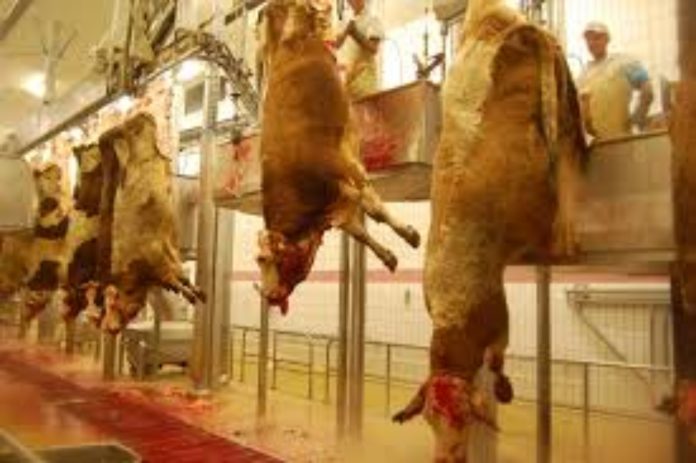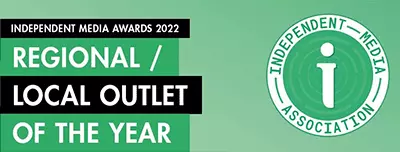In recent years, the ethical implications of eating meat have come under increasing scrutiny. While many people view meat consumption as a normal part of daily life, the reality of how animals are raised and killed for food is often hidden from public view. The process is not only brutal but also raises serious questions about our moral responsibility towards other living beings. The following explores why eating meat can be considered barbaric, with a focus on the methods used to kill animals in the UK and beyond.
The Reality of Slaughterhouses
In the UK, slaughterhouses are regulated by strict laws designed to ensure that animals are killed “humanely.” The Welfare of Animals at the Time of Killing (WATOK) regulations require that animals are stunned before slaughter to minimise pain and distress. However, the reality often falls short of these ideals.
- Stunning Methods:
The most common method of stunning in the UK is captive bolt stunning, where a metal bolt is fired into the animal’s skull to render it unconscious. While this is intended to be instantaneous, errors can occur. Misplaced bolts or equipment malfunctions can leave animals conscious and in agony. In the case of electrical stunning, used for pigs and poultry, improper voltage or application can result in animals being paralysed but still aware of their surroundings. - Halal and Kosher Slaughter:
Religious slaughter methods, such as Halal and Kosher, are exempt from stunning requirements in the UK. In these practices, animals have their throats cut while fully conscious, leading to prolonged suffering as they bleed out. While proponents argue that these methods are quick, numerous investigations have shown that animals often remain conscious for minutes after the cut, experiencing extreme pain and distress.
This is How, Royal Halal Steak is made pic.twitter.com/OEbFespQVm
— Harman Singh Kapoor (@kingkapoor72) March 6, 2025
This part of the article was updated on 12/3/25 to include the following communication:
‘We represent Shechita UK, an organisation dedicated to protecting the Jewish religious method of humane animal slaughter for food (www.shechitauk.org). This practice is absolutely vital for Jewish communities in the UK.
Shechita is the Jewish religious method of humane animal slaughter and is the only method that permits Jews to consume meat. Since the 1930s, the legal status of Shechita in the UK has been recognised as an exception to the law. This means there is a legal requirement for mechanical stunning before slaughter, except for food intended for religious communities. Today, this exception is enshrined in The Welfare of Animals at the Time of Killing (England) Regulations 2015, Schedule 3.
At its core, Shechita is a community service, not a business. Our community slaughters animals solely for our own food consumption, and the quantities are extremely low. This is evidenced by the 2025 FSA survey, which shows that Shechita accounts for only around 1% of the total animals slaughtered for food in the UK.
To provide clarity, here are some key points about the Shechita method:
- Shechita conforms to the legal definition of stunning: It meets the accepted legal definition of stunning, which is “any intentionally induced process that causes loss of consciousness and sensibility without pain, including any process resulting in instantaneous death.” Shechita achieves this by causing the immediate cessation of cerebral perfusion pressure, producing an effective stun that ensures the animal is instantly insensible to pain, followed by death.
- Highly trained professionals: All Jewish slaughtermen (shochetim) are highly professional and undergo extensive training. This includes rigorous theoretical and practical education, as well as a long apprenticeship. The blades used must be twice the size of the animal’s neck and are surgically sharp, free from even the smallest imperfection, ensuring a rapid and clean incision.
- Regulation and oversight: UK regulations require a slaughterman to hold both a Certificate of Competence and a license from The Rabbinical Commission for the Licensing of Shochetim, a statutory body established by Parliament in 1932.
We are deeply concerned by the inaccurate portrayal of Shechita in your coverage, which claims that “in these practices, animals have their throats cut while fully conscious, leading to prolonged suffering as they bleed out. While proponents argue that these methods are quick, numerous investigations have shown that animals often remain conscious for minutes after the cut, experiencing extreme pain and distress.”
This description is misleading and does not reflect the reality of Shechita, which is designed to ensure the animal feels no pain and loses consciousness instantly.’
- Chickens and Turkeys:
Poultry, which makes up the majority of animals slaughtered in the UK, often endures some of the worst conditions. Birds are hung upside down on conveyor belts, their heads dragged through electrified water to stun them before their throats are cut. However, the stunning process is frequently ineffective, leaving many birds fully conscious as they enter the scalding tanks designed to remove their feathers.
Global Practices: Even Greater Cruelty
While the UK has regulations in place, the situation is often far worse in other parts of the world. In many countries, animal welfare standards are either nonexistent or poorly enforced, leading to unimaginable suffering.
- Live Export:
The UK exports live animals to countries where welfare standards are lower. These animals endure long, gruelling journeys in cramped conditions, often without adequate food, water, or ventilation. Upon arrival, they face slaughter methods that would be illegal in the UK, such as being stabbed repeatedly or having their throats cut without prior stunning. - Factory Farming in the US and Asia:
In countries like the United States and China, factory farming is the norm. Animals are kept in overcrowded, unsanitary conditions, often unable to move or express natural behaviours. Pigs, for example, are confined to gestation crates so small they cannot turn around, while chickens are packed into cages with barely enough space to spread their wings. Slaughter methods in these regions are often rushed and brutal, with little regard for animal welfare. - Dogs and Cats in the Meat Trade:
In parts of Asia, dogs and cats are raised and slaughtered for meat. These animals are often kept in horrific conditions, subjected to abuse, and killed in ways that maximise suffering. Videos and images from these industries show animals being beaten, boiled alive, or skinned while still conscious.
The Moral Argument
The sheer scale of suffering inflicted on animals for meat consumption raises profound ethical questions. Animals are sentient beings capable of feeling pain, fear, and distress. Yet, billions of them are subjected to lives of misery and violent deaths simply to satisfy human appetites. This systematic exploitation and killing of animals can only be described as barbaric.
- Sentience and Suffering:
Scientific research has repeatedly shown that animals, including cows, pigs, and chickens, are highly intelligent and emotionally complex. They form social bonds, experience joy, and feel pain just as acutely as humans do. To subject them to lives of confinement and violent deaths is a betrayal of our responsibility to treat other beings with compassion. - Environmental Impact:
Beyond the ethical concerns, the meat industry is a leading driver of environmental destruction. Deforestation, greenhouse gas emissions, and water pollution are all linked to industrial animal farming. Choosing plant-based alternatives not only reduces animal suffering but also helps protect the planet. - Health Implications:
A diet high in meat has been linked to numerous health problems, including heart disease, diabetes, and certain cancers. By contrast, plant-based diets are associated with lower risks of chronic illnesses and improved overall health.
In summary, eating meat is not just a dietary choice; it is a moral one. The methods used to kill animals in the UK and around the world are often brutal and inhumane, causing immense suffering to sentient beings. As awareness grows, more people are recognising that the consumption of animal products is incompatible with a compassionate and ethical lifestyle. By choosing plant-based alternatives, we can reduce the demand for meat, lessen the suffering of animals, and move towards a more humane and sustainable future. The question we must ask ourselves is simple: is our taste for meat worth the cost of so much pain and suffering?







